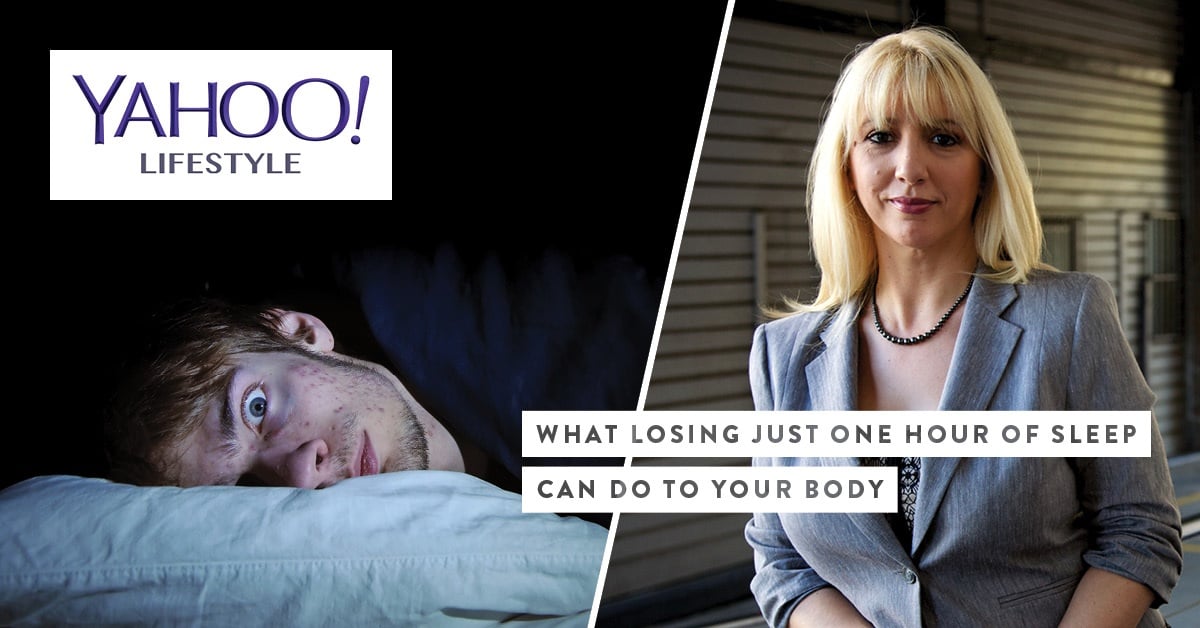Looking For A Fountain Of Youth? Try Exercise
Most people who lead a more sedentary lifestyle are probably aware of the benefits of exercise. Why do so many people not exercise then? Figuring out why we seem so reluctant to hit the gym may help bring balance to the workplace when so many people work jobs which do not encourage much movement.
Physical activity is good for us. Scientists and medical professionals have urged people for years to get more exercise. The Australian Department of Health1 recommends varying levels of physical activity, including playtime and exercise based on age, including:
- Toddlers and preschoolers: At least 180 minutes (and more is better) of running, throwing, and playing throughout the day.
- School-aged children (to 17): At least 60 minutes a day of vigorous activity and several hours per day of light activity.
- Adults (18-64): Adults should be active every day of the week, and accumulate between 150 to 300 minutes of moderate activity per week or 75-150 minutes of vigorous activity (or some combination of both, noting that more is better).
- Older Adults (65+): At least 30 minutes of moderate activity most days (7 days/week is preferred).
The Daily Recommendations Aren’t
Happening For Most People
Unfortunately, even though we know what is recommended, many people do not follow through. Or, they make plans to exercise and start out strong, but then they eventually give in to excuses and stop doing it. In Australia, 55% of adults did not meet the above guidelines, and only 12% of children met the recommendations for physical activity.2
Physical activity is needed to keep our bodies healthy and happy. There is an abundance of research explaining how exercise can reduce cardiovascular disease, obesity, colon cancer and breast cancer.
Even with all this evidence, around 74% of people in the United States do not get at least 30 minutes of moderate exercise on the majority of days per week. Children are also becoming more sedentary in the US and other parts of the world, which can lead to the early onset of diseases including type II diabetes.3
The financial price of inactivity is already a factor for healthcare systems around the world. Figures dating back to 2013 estimate that physical inactivity costs us at least $50 billion worldwide, and these numbers are likely to continue to climb.4
A Brain Without Exercise Is A Brain Without Longevity
Besides the obvious benefits to our physical bodies, exercise offers many benefits for the brain. Physical activity has been shown to prevent or slow the loss of cognitive function we normally associate with aging.
As we get older, the cortex and the hippocampus tend to atrophy, which negatively impacts memory function. Neuroscience studies on older adults have shown that cognition and fitness level are linked, and fitter people tend to have healthier, higher-functioning brains. MRI studies have also found that prefrontal and temporal grey matter is higher in older, physically-active patients.5
Stress is another factor which plays a big part in our lives. Studies have shown an inverse relationship between physical activity and stress. The more we exercise, the lower our stress levels are likely to be. Other stress-management techniques like meditation and yoga can help keep us on track to meet physical activity goals.6
Physical fitness is not only one of the most important keys to a healthy body, it is the basis of dynamic and creative intellectual activity.
John F. Kennedy
So, why do people still not get enough exercise? The answer to this question is complicated, but scientists have shown factors including cost, access to childcare, low awareness, the fear of working out alone and the accessibility of appropriate facilities may deter people from exercising.
People who are economically disadvantaged are less likely to exercise the recommended amounts, even if community programs are available. One study in the UK found many people didn’t exercise because they didn’t have time after working one or more jobs, they didn’t want to leave their children with strangers or they didn’t feel confident enough to enter a gym or workout facility.7
Finding The Balance Between Activity And Inactivity
The cold, hard truth is that many are aware of the benefits of exercise and how much they should be moving, but they don’t. The reasons can be complicated, but most people can work in more motion during their days if they want to make a change. However, our physical and mental health demand that we stop sitting so much and start moving.
Things to remember include:
- Always talk to your doctor or healthcare provider before beginning an exercise program, especially if you are out of shape.
- Find something you love! Want to dance? Dancing is a fantastic way to burn calories and improve the health of both your body and mind. Love to rock climb? Look for a local group to join. Want to try a 5K? Download an app to help you meet your goals.
- Add in small amounts of exercise during the day. Skip the lift and run up the stairs. Keep a pair of comfortable sneakers in your desk and take a walk outside after lunch. Park further from the door of stores or restaurants so you squeeze in some extra steps. Take a break every hour or so to stretch and move your body at work.
Leaders who do not exercise enough are not going to be as physically or mentally fit to lead as their counterparts who do devote time each day to exercise. The i4 Neuroleader Program can help you meet your goals, both physically and mentally, to become the leader you were always meant to be!
Citations:
- Australian Government Department of Health. Population Health Division. Australia’s Physical Activity and Sedentary Behaviour Guidelines and the Australian 24-Hour Movement Guidelines, (2014, accessed 23 November 2019).
- Physical activity Overview - Australian Institute of Health and Welfare. Australian Institute of Health and Welfare, (accessed 23 November 2019).
- Hillman CH, Erickson KI, Kramer AF. Be smart, exercise your heart: exercise effects on brain and cognition. Nat Rev Neurosci 2008; 9: 58–65.
- Ding D, Lawson KD, Kolbe-Alexander TL, et al. The economic burden of physical inactivity: a global analysis of major non-communicable diseases. The Lancet 2016; 388: 1311–1324.
- van Praag H. Exercise and the brain: something to chew on. Trends Neurosci 2009; 32: 283–290.
- Stults-Kolehmainen MA, Sinha R. The effects of stress on physical activity and exercise. Sports Med 2014; 44: 81–121.
- Withall J, Jago R, Fox KR. Why some do but most don’t. Barriers and enablers to engaging low-income groups in physical activity programmes: a mixed methods study. BMC Public Health 2011; 11: 507.
- i4 Neuroleader (353)
- Leadership & Culture (325)
- Brain Health & Wellbeing (202)
- Innovation (97)
- Performance (85)
- Our News (80)
- Collaboration (68)
- Agility (53)
- Practitioner Stories (44)
- In The Press (36)
- Make Me A Leader (33)
- Balance (31)
- Integration (30)
- Imagination (29)
- Awareness (23)
- Brain-Friendly Channel (22)
- Communication (22)
- Curiosity (21)
- Inspiration (19)
- Intuition (19)
- Attitude (17)
- Courage (16)
- Adaptability (14)
- Case Studies (14)
- Drive (14)
- Generosity (13)
- Brain-Friendly Leadership (11)
- Ethics (9)
- Mental Readiness (9)
- Influence (8)
- Retreat (6)
- Brain-Friendly Leadership (1)
- Oracle Cards (1)
- 1 April 2025 (1)
- 1 March 2025 (9)
- 1 February 2025 (3)
- 1 September 2024 (4)
- 1 July 2024 (2)
- 1 June 2024 (6)
- 1 May 2024 (2)
- 1 April 2024 (3)
- 1 March 2024 (1)
- 1 November 2023 (1)
- 1 August 2023 (1)
- 1 July 2023 (2)
- 1 June 2023 (2)
- 1 May 2023 (4)
- 1 April 2023 (2)
- 1 March 2023 (7)
- 1 February 2023 (4)
- 1 January 2023 (1)
- 1 September 2022 (1)
- 1 May 2022 (3)
- 1 April 2022 (1)
- 1 March 2022 (5)
- 1 February 2022 (4)
- 1 January 2022 (4)
- 1 December 2021 (2)
- 1 November 2021 (4)
- 1 October 2021 (3)
- 1 September 2021 (6)
- 1 August 2021 (1)
- 1 April 2021 (1)
- 1 December 2020 (2)
- 1 November 2020 (1)
- 1 September 2020 (1)
- 1 August 2020 (1)
- 1 July 2020 (3)
- 1 June 2020 (4)
- 1 May 2020 (3)
- 1 April 2020 (4)
- 1 March 2020 (6)
- 1 February 2020 (4)
- 1 January 2020 (2)
- 1 December 2019 (3)
- 1 November 2019 (3)
- 1 October 2019 (5)
- 1 September 2019 (4)
- 1 August 2019 (4)
- 1 July 2019 (4)
- 1 June 2019 (5)
- 1 May 2019 (9)
- 1 April 2019 (9)
- 1 March 2019 (8)
- 1 February 2019 (7)
- 1 January 2019 (8)
- 1 December 2018 (5)
- 1 November 2018 (10)
- 1 October 2018 (16)
- 1 September 2018 (9)
- 1 August 2018 (10)
- 1 July 2018 (9)
- 1 June 2018 (8)
- 1 May 2018 (9)
- 1 April 2018 (9)
- 1 March 2018 (9)
- 1 February 2018 (8)
- 1 January 2018 (8)
- 1 December 2017 (6)
- 1 November 2017 (9)
- 1 October 2017 (9)
- 1 September 2017 (8)
- 1 August 2017 (10)
- 1 July 2017 (8)
- 1 June 2017 (8)
- 1 May 2017 (9)
- 1 April 2017 (8)
- 1 March 2017 (6)
- 1 January 2017 (3)
- 1 December 2016 (4)
- 1 November 2016 (5)
- 1 October 2016 (4)
- 1 September 2016 (2)
- 1 August 2016 (4)
- 1 July 2016 (4)
- 1 June 2016 (2)
- 1 May 2016 (3)
- 1 April 2016 (3)
- 1 March 2016 (7)
- 1 February 2016 (2)
- 1 January 2016 (5)
- 1 December 2015 (2)
- 1 November 2015 (2)
- 1 October 2015 (4)
- 1 September 2015 (2)
- 1 August 2015 (2)
- 1 July 2015 (1)
- 1 June 2015 (3)
- 1 May 2015 (4)
- 1 April 2015 (5)
- 1 March 2015 (3)
- 1 February 2015 (3)
- 1 January 2015 (3)
- 1 December 2014 (3)
- 1 November 2014 (3)
- 1 October 2014 (3)
- 1 September 2014 (5)
- 1 August 2014 (4)
- 1 July 2014 (5)
- 1 June 2014 (3)
- 1 May 2014 (1)
- 1 March 2014 (1)
- 1 December 2013 (2)
- 1 November 2013 (1)
- 1 July 2013 (1)
- 1 June 2013 (1)
- 1 May 2013 (3)
- 1 April 2013 (1)
- 1 March 2013 (2)
- 1 February 2013 (1)
- 1 January 2013 (2)
- 1 November 2012 (1)
- 1 October 2012 (1)
- 1 September 2012 (1)
- 1 August 2012 (2)
- 1 July 2012 (1)
- 1 June 2012 (1)
- 1 May 2012 (2)
- 1 April 2012 (1)
- 1 February 2012 (1)
- 1 January 2012 (1)
- 1 November 2011 (1)
- 1 October 2011 (3)
- 1 September 2011 (2)
- 1 July 2011 (1)
- 1 June 2011 (1)
- 1 May 2011 (1)
- 1 April 2011 (1)
- 1 March 2011 (1)
- 1 February 2011 (2)
- 1 January 2011 (4)
- 1 December 2010 (4)
- 1 November 2010 (3)
- 1 October 2010 (5)
- 1 September 2010 (4)
- 1 August 2010 (4)
- 1 July 2010 (3)
- 1 June 2010 (4)
- 1 May 2010 (7)
- 1 April 2010 (5)
Subscribe by email
You May Also Like
These Related Stories

Learning From The Curve Balls In Life

The Pleasure Of Exercising



No Comments Yet
Let us know what you think